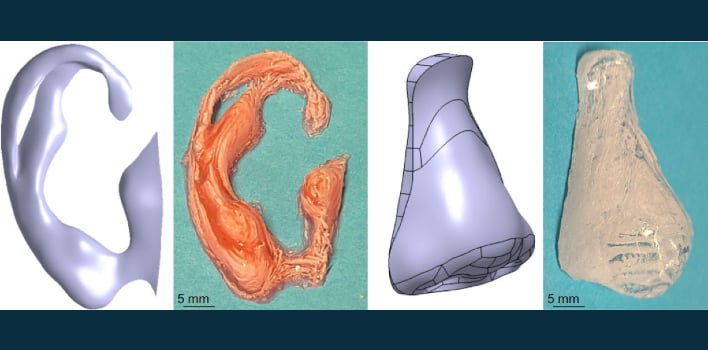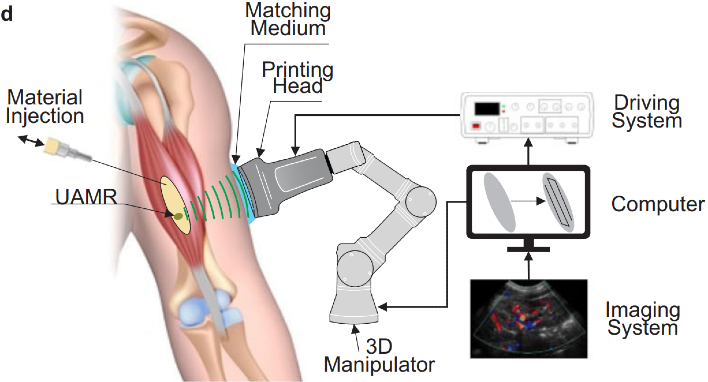How Flesh Penetrating Sound Waves Could 3D Print Implants Directly Inside You

3D-printing has been gaining in popularity as the cost of being able to buy the necessary equipment has become more affordable. While it is still not as economical as other methods, such as injection molding for plastics, it has seen an increase in usage in various areas. A team of researchers at Concordia University have taken advantage of the fact 3D-printing allows for creating shapes other methods are incapable of, and engineered a way to possibly use the technology to place medical implants inside a human body without the need of making an incision.
The approach involves direct sound printing, which focuses ultra high-frequency sound waves on a spot of liquid resin for a mere trillionth of a second, researchers indicated last week. While the time it takes is extremely quick, it is also incredibly powerful, causing a tiny bubble to form that has enough energy to trigger a chemical reaction that solidifies the resin.

"DSP introduces the possibility of noninvasive deep inside the body printing," researchers at Concordia stated in a Nature Communications paper. Prototypes used in the study ranged from ears to noses, while none of them were actually implanted inside a patient.
The majority of 3D printing solidifies materials using light or heat. By utilizing sound instead, energy is able to be directed to the correct spot, forming a small bubble through a process called cavitation. Temperatures can reach a pressure approximately 1,000 times that of air at sea level and around 27,000 degress Fahrenheit, which is hotter than the 10,000 degrees surface of the sun.

"We proved that we can print multiple materials, including polymers and ceramics," Concordia researcher Muthukumaran Packirisamy stated. "We are going to try polymer-metal composites next, and eventually we want to get to printing metal using this method."
What do you think of this new method of 3D-printing and having it used to place implants inside the body without the need to make an incision? Let us know in the comments.
Top Image Credit: Nature Communications/Concordia University

